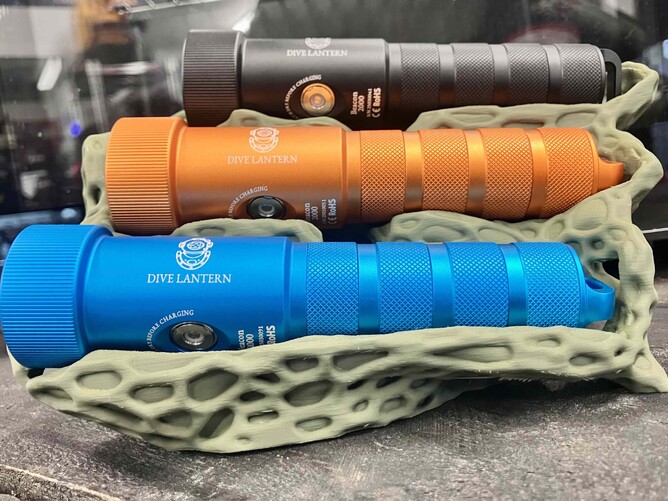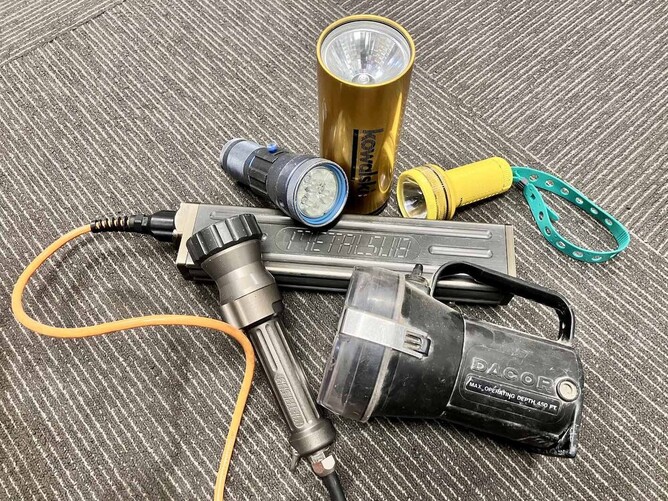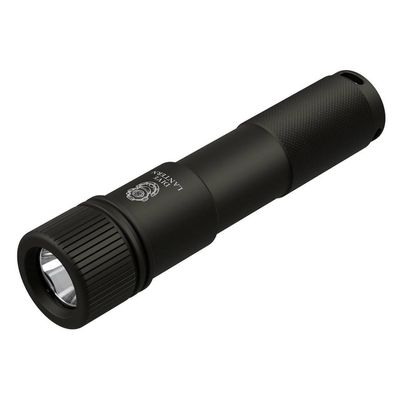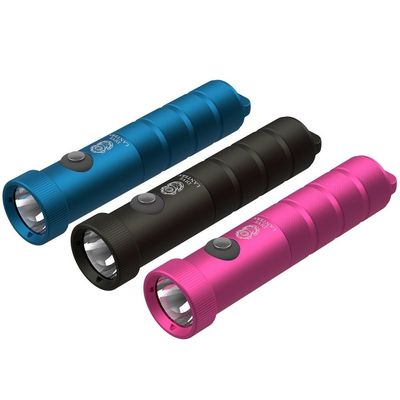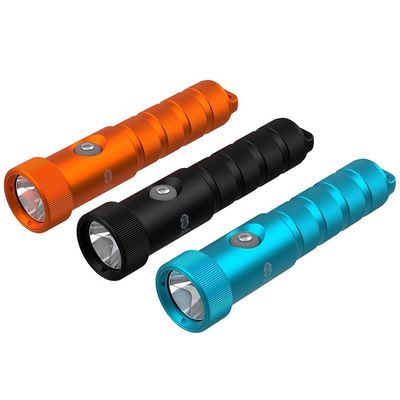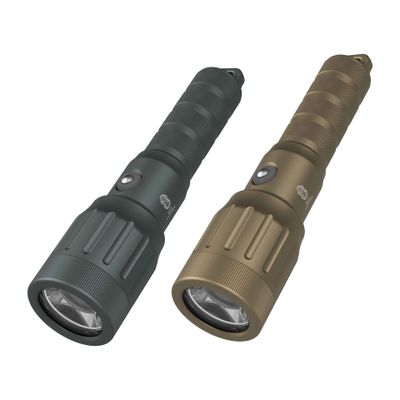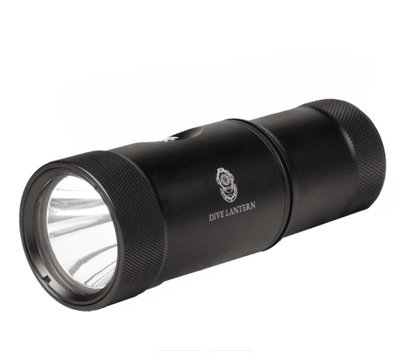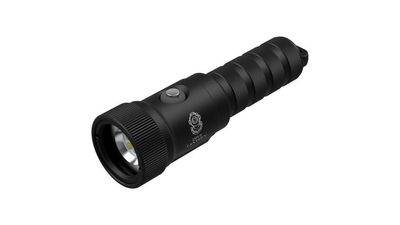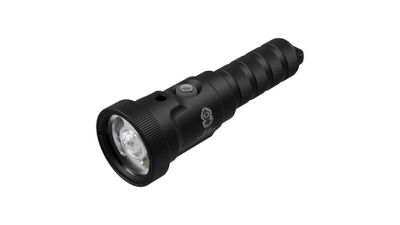The evolution of underwater lighting: The story of Dive Lantern and their torch range.
Introduction — Why Underwater Lighting Matters
Light behaves very differently underwater. Within the first 5 metres, red wavelengths vanish; at 10 metres, oranges disappear; and by 30 metres, almost all natural colour is filtered out, leaving divers in a blue-green world. On top of that, night dives, wrecks, and caves demand artificial illumination for both safety and exploration.
That’s why a good dive torch isn’t just a gadget — it’s an essential piece of kit. Whether you’re spotting crayfish on a shallow reef, signalling your buddy in the dark, or illuminating the inside of a shipwreck, a reliable light makes all the difference.
Dive torches have evolved enormously in the last 70 years. Today, modern LED systems are compact, powerful, and durable, but the journey to this point is a fascinating part of diving history. Against that backdrop, a relatively young Australian company, Dive Lantern, has emerged with a full line of torches now trusted by divers around the globe — and increasingly by the professional team here at Aotearoa Dive.
A Brief History of Dive Torches
Early Dive Lights (1940s–1960s)
When recreational scuba diving took off in the 1940s and 50s, underwater lights were primitive. Divers often modified land-based flashlights by sealing them in watertight housings. These used incandescent bulbs powered by heavy lead-acid or dry cell batteries.
Brands like Dacor and Voit produced early waterproof lamps, while US Divers (Aqualung) and Spaco began offering purpose-built underwater torches by the late 1950s. Output was weak — often less than 100 lumens — but they were a lifeline for wreck and cave explorers of the day.
The Halogen Era (1970s–1980s)
The 1970s introduced halogen bulbs, which were brighter, whiter, and more efficient than tungsten filaments. Popular models included:
• UK (Underwater Kinetics) Super Q — compact and rugged, a classic among recreational divers.
• Scubapro Nova series — slimline halogen torches that became widely used.
• Dacor Penetrator — a long-bodied torch with real punch for its time.
These lights ran on large C or D-cell batteries, limiting runtime, but they were a leap forward in brightness and durability.
HID & Xenon Breakthrough (1990s–2000s)
The 1990s brought HID (High Intensity Discharge) technology. HID lights were brighter and more efficient, producing beams that could slice through murky water. For technical divers, they were revolutionary.
Well-known examples included:
• UK Light Cannon HID — a handheld torch producing ~450 lumens, huge for its day.
• Halcyon Explorer HID Canister Light — which became a staple for cave and wreck divers.
• Green Force modular HID systems — popular among European tech divers.
HID torches had downsides: fragile bulbs, expensive parts, and long warm-up times. But for serious exploration, they were game changers.
Some of our vintage torches...
The LED Revolution (2000s–Present)
By the mid-2000s, LEDs took over. Offering instant-on power, massive efficiency gains, incredible durability, and compact form factors, LEDs quickly surpassed both halogen and HID.
Modern LEDs can now pump out thousands of lumens with runtimes measured in hours, powered by rechargeable lithium-ion batteries. Brands like BigBlue, Light & Motion, Orcatorch, and Underwater Kinetics dominate the market with options ranging from small backups to 10,000+ lumen video floods.
Where Dive Lantern Fits In
Dive Lantern, founded in 2021 in Perth, Western Australia by diver and entrepreneur Nik Johnson, arrived at the peak of the LED era. Johnson had worked in dive-light design since 2015, giving the brand solid experience despite its youth.
Dive Lantern’s philosophy is simple: torches designed by divers, for divers. The lights reflect real-world needs — compact, reliable, and powerful, with user-friendly features like magnetic charging and flexible battery systems.
Dive Lantern — Philosophy & Growth
Although relatively new, Dive Lantern has grown quickly, building a range of torches that cater to:
• Recreational divers needing reliable, affordable primaries and backups
• Technical divers looking for redundancy and solid build quality
• Underwater photographers and videographers requiring high-output, wide-beam floods
With an expanding lineup of accessories (chargers, batteries, mounts, trays), Dive Lantern is carving out a niche as a flexible, diver-focused brand, and here in New Zealand, Aotearoa Dive now stocks the entire range — with our dive professionals actively using and recommending these lights.
The Dive Lantern Range — Specifications and Reviews
Here’s a breakdown of the main Dive Lantern models, their features, and how they perform in real-world diving:
⸻
Dive Lantern Pygmy 6 (600 lumens)
• Max output: 600 lm (with rechargeable 14500 battery)
• AA fallback mode: ~200 lm
• Beam: 10° spot
• Runtime: ~60 minutes on high
• Depth rating: 100 m
• Weight: ~90 g (very compact)
Review:
The Pygmy 6 is a classic backup torch. Its tiny size and light weight make it easy to clip to your harness or stash in a pocket. The narrow 10° beam helps cut through water, making it useful for signalling.
As a primary light, it’s underpowered for night or wreck dives, but as a reliable spare it shines. The AA fallback mode is clever — if you forget to charge, you can grab a standard battery and still have usable light.
Best suited for: recreational divers who want a reliable emergency backup, or technical divers looking for a tertiary light.
⸻Dive Lantern Nano 600
• Output (white): 600 lm 
• Depth rating: 100 m / 330 ft 
• Beam: ~10° spot
• Battery: 14500 Li-ion rechargeable (also likely fallback to standard battery option) 
• Charge time (USB-C): ~2 hours
• Weight: ~90 g (with battery) 
• Size: ~114 × 26 mm (approx) 
• Warranty: 1 year 
• Included: light, battery, cable, lanyard, spare O-rings 
Review
The Nano 600 serves as a compact backup / tertiary / minimal primary depending on your dive environment. Its very modest size and weight (≈ 90 g) make it extremely handy to clip, stow, or carry as an emergency light. The ~600-lumen output gives enough punch for close-range inspection, signalling, or navigating in moderate visibility. The 10° beam helps with penetration, but it won’t reach far.
In recreational diving, the Nano is unlikely to replace a main light, particularly for night dives or murky conditions, but it’s ideal as a backup or shoulder light. For technical divers, it makes sense as a tertiary or safety light, especially where trim and minimalism are important.
Its runtime and beam reach are limited, so it should not be relied on as a primary in challenging environments. Also, very small torches sometimes become harder to operate with thick gloves — switch design and usability matter.
Best suited for: Backup / tertiary light in a multi-light rig, Ideal for divers wanting a compact emergency or inspection light, Occasional use as a primary in shallow, high-visibility dives
Dive Lantern Core 1000 (1000 lumens)
• Max output: 1000 lm (90 min runtime)
• Modes: 500 lm (180 min), 100 lm (900 min)
• Beam: 8°
• Depth rating: 100 m
• Battery: 18650 rechargeable
• Weight: ~140 g
Review:
The Core 10 is a workhorse all-rounder. With 1000 lumens, it’s powerful enough for night dives, reef exploration, and moderate wrecks. The stepped modes give flexibility for conserving battery.
Its 8° spot beam is tight, great for distance and signalling, though not a flood. Runtime is modest at full power, but sufficient for most recreational dives. Compact, lightweight, and simple to use, it’s an excellent first serious dive torch — and doubles nicely as a backup when you upgrade.
Best suited for: recreational divers needing a dependable primary; technical divers as a backup or secondary.
Dive Lantern Beacon 2000
• Max output: 2000 lm (90 min runtime)
• Modes: 1000 lm (180 min), 200 lm (900 min)
• Beam: 9°
• Depth rating: 100 m
• Battery: 5000 mAh Li-ion
• Charging: Magnetic external
• Weight: 250 g
Review:
The Beacon 2000 is Dive Lantern’s flagship primary light. Its 2000 lumens give a strong punch for most diving conditions — from murky lake dives to deep reefs and wrecks.
The beam is tight enough to pierce through particulate water, while still usable for general exploration. Magnetic charging is a major convenience, reducing the need to open O-rings.
Its runtime at full output is about 90 minutes, so battery management is key, but for most single-tank dives it’s ideal. Many divers see the Beacon 2000 as the perfect “one light” solution for recreational diving.
Best suited for: recreational divers who want a powerful, reliable primary; tech divers for moderate penetrations.
Dive Lantern Focus 3000
• Max output / runtime: 3,000 lm / 75 min 
• Mid output: 1,500 lm / 150 min 
• Low output: 300 lm / 750 min 
• Beam angle: 11° to 70° (adjustable) 
• Depth rating: 100 m / 330 ft 
• Battery: 21700 Li-ion, rechargeable 
• Battery capacity: 5,000 mAh 
• Charge time: approx. 3 h 
• Battery indicator:
• 66–100% Blue
• 33–66% Green
• 5–33% Red
• 1–5% Flashing Red 
• Weight (with battery): 480 g / ~17 oz 
• Size: 205 × 52 mm (8.1 × 2.1 in) 
• Warranty: 1 year 
• Included in package: light, battery, magnetic charging cable, lanyard, spare O-rings 
Review
The Focus 3000 is clearly designed as a high-versatility primary dive torch, combining both reach and area coverage via its adjustable beam. The ability to shift from a narrow 11° “punch” beam into a wide 70° flood makes it especially useful when a dive’s requirements vary — e.g. open water swimming, penetrating a wreck, or illuminating a broader scene for visual inspection or photography.
At full power (3,000 lm), it can deliver strong performance for demanding dives — though 75 minutes at that level is decent, not exceptional, so you’ll want to manage usage or have backups. The mid and low settings give you flexibility to extend runtime when conditions allow.
The 100 m depth rating means it’s suitable for most recreational and many advanced dives, though extreme deep or overhead technical divers might desire higher ratings. The weight (480 g) is moderate: noticeable in hand, but manageable for a primary torch. The beam adjustment mechanism is a design-critical element — it must remain robust, sealed, and reliable — since movable optics are always a point of vulnerability underwater.
Battery indicator is a useful feature, giving you a quick visible read on remaining power. Magnetic charging is not explicitly stated on the Dive Lantern spec page (but given their other models, it may be assumed or included) — in any case, charging convenience is vital.
Best suited for Divers who want one torch to do it all (spot + flood), Recreational to moderate technical dives where 100 m is adequate, Situations where beam versatility is beneficial (wrecks, caverns, swim-throughs)
As a supplementary or backup light, the Focus 3000 is more powerful and heavier than necessary — its strength is really in a versatile primary role.⸻
Dive Lantern TEC18
• Max output: 1,800 lumens
• Runtime: 3 hrs (full), 6 hrs (900 lm), 12 hrs (450 lm), 54 hrs (100 lm)
• Beam angle: 6° tight spot
• Depth rating: 200 m / 660 ft
• Battery: 11.1 V, 3,400 mAh Li-ion rechargeable pack
• Charging: 3A external charger, ~3 hrs
• Battery indicator: Blue (70–100%), Green (30–70%), Red (5–30%), Flashing Red (2–5%)
• Dimensions: 148 × 52 mm
• Weight: ~450 g (with battery)
• Switch: push-button operation
• Package includes: torch, battery pack, charger, Soft Goodman glove, 2 spare O-rings, battery cap
• Warranty: 1 year
Review
The TEC18 is a torch designed with serious diving in mind. Rated to 200 metres, it pushes far beyond recreational limits, making it a natural fit for technical divers exploring deep wrecks, caves, and extended overhead environments. Its tight 6° beam punches through the water, cutting through silt and particulate to give you a clear, precise spotlight for navigation and signalling.
At 1,800 lumens, the TEC18 isn’t chasing raw lumen bragging rights — instead, it’s optimised for beam quality and endurance. With a solid 3 hours at full power, and lower modes extending to an impressive 54 hours, the torch offers flexibility to match your dive profile. The integrated battery indicator gives real-time peace of mind, a must-have for anyone planning extended runtimes or decompression dives.
Comfort is also factored in: the supplied Soft Goodman glove allows for hands-free use, ideal when running reels, managing gear, or writing on a slate. At around 450 g, the TEC18 feels robust without being excessively heavy, and the compact form factor is easier to handle compared to larger canister lights.
Best Suited For Technical diving – caves, wrecks, deep dives, and long runtime requirements, Recreational divers wanting a serious upgrade for night diving, limited-visibility water, or challenging conditions, Divers who value a tight signalling beam over a wide flood, Anyone needing a rugged, dependable torch for demanding environments.
Dive Lantern Harlequin 2500
• Output & runtime:
• 2,500 lm / 70 min 
• 1,250 lm / 140 min 
• 625 lm / 280 min 
• Beam angle: 110° wide flood 
• Depth rating: 100 m / 330 ft 
• Colour temperature: 5,600 K 
• CRI (Colour Rendering Index): RA 80 
• Charger: Two-bay 2A USB-C universal charger 
• Charge time: ~3 hours at 2A 
• Battery indicator / levels:
• 67 – 100% Blue 
• 33 – 66% Green 
• 10 – 32% Red 
• <10% Flashing Red 
• Weight (with battery): 330 g / 11.8 oz 
• Size: 152 × 45 mm (5.98 × 1.77 in) 
• Warranty: 1 year 
• In the box / included: light, battery, charger, ball mount, lanyard, spare O-rings, neoprene bag 
Review
The Harlequin 2500 is clearly aimed at underwater imaging and videography rather than being a general-purpose dive torch. Its wide 110° flood beam and high output are ideal for illuminating entire scenes — divers, reef walls, or wreck interiors — without harsh shadows or hot spots.
At 2,500 lumens, it has enough brightness to make colours pop in footage, especially in moderate depth and clarity conditions. The multiple output levels allow more conservative use when full power isn’t necessary. The 100 m depth rating is on par with many recreational / advanced dive lights, though some technical divers pushing deeper may look for more depth margin.
Weighing 330 g, it’s reasonably light for a video light, and its form is compact and manageable on mounting arms or trays. The battery indicator colours are handy in the field (Blue / Green / Red / Flashing Red) so you can monitor charge status at a glance. The 3-hour full charge time via USB-C (2A) is practical for pre-dive turnaround.
One of its strengths is beam uniformity and spread — a wide, even field of illumination is exactly what imaging divers want, especially when using wide-angle lenses that demand broad, even coverage rather than a tight spot. The 5,600 K colour temperature and RA 80 CRI suggest a good balance of white light quality, which helps reduce post-processing colour correction.
However, the Harlequin 2500 is not optimized for penetration or navigation in dark water — its wide flood spreads light thinly over distance, so in poor visibility or long-range tasks it will struggle. For divers needing a torch that can both navigate and light up scenes, pairing the Harlequin with a spot beam (like Beacon 2000 or Focus 3000) is advisable. Its 100 m rating and imaging orientation limit how well it fits into deep technical diving roles alone.
In real-world terms, the Harlequin 2500 is a strong, balanced video flood for recreational and semi-technical divers building underwater camera setups. It offers excellent value in its class, especially when paired with a spot torch for navigation and redundancy.
Best Suited For Underwater video / photography as a flood / fill light, Divers using action cams, wide-angle lenses, or rigs needing balanced lighting, Paired setups (e.g. dual Harlequins or Harlequin + Mantis) for symmetry, Recreational and advanced dives up to 100 m, Complement as flood light in a multi-torch rig (with a spot light for navigation)
Dive Lantern Mantis 2500
•Output – Wide mode:
• 2,500 lm / 70 min
• 1,250 lm / 140 min
• 625 lm / 280 min 
•Output – Spot mode:
• 1,500 lm / 125 min
• 750 lm / 250 min
• 380 lm / 500 min 
•Beam angles: Wide ~110°, Spot ~15° 
•Colour temperature: Wide 5,600K, Spot 6,500K 
•Battery: 1 × 21700, 5,000 mAh 
•Battery indicator:
• 67–100% = Blue
• 33–66% = Green
• 10–32% = Red
• <10% = Flashing Red 
•Charger: Two-bay 2A USB-C universal charger 
•Charge time: ~3 hours at 2A 
•Depth rating: 100 m / 330 ft 
•Weight (incl battery): 350 g / ~12.5 oz 
•Size: 168 × 56 mm (6.6 × 2.2 in) 
•Included in box: light, battery, charger, ball mount, lanyard, spare O-rings, neoprene bag 
Review
The Mantis 2500 is positioned as a hybrid video + torch light, straddling the boundary between imaging flood lighting and usable dive torch functionality. It gives you both a wide “flood” white beam (110°) and a spot beam (~15°) in the same unit, which is a powerful combination for divers who want one light to do both tasks. 
The wide mode (2,500 lm) is well suited for lighting whole scenes — reefs, wreck walls, or dive groups — giving an even flood that minimises harsh shadows. Meanwhile, the spot mode (1,500 lm) gives you a tighter beam for penetrating darker water, reaching distance, and navigating in low visibility. This duality makes the Mantis 2500 more flexible than a pure flood or pure spot light.
Including red LEDs and UV LEDs (220/480 nm) gives extra creative and scientific utility: red light is less disruptive to marine life, and UV can help reveal fluorescence in corals or small critters. 
One limitation is the 100 m depth rating, which is standard for many recreational/advanced lights but may be conservative for deeper technical diving. Also, when using full power modes, battery runtime and thermal management become critical — the Mantis is powerful, but careful usage will ensure reliability throughout a dive.
Because it already includes both wide and spot beams, the Mantis 2500 can reduce the need for carrying a separate flood and spot light. For divers who shoot video or photography but also dive in less-than-ideal conditions, it’s a strong all-in-one choice. In challenging conditions (murky water, deep dives), pairing it with another high-power spot light may still be advantageous.
All up, the Mantis 2500 is an excellent mid- to high-end option for divers wanting imaging capability without sacrificing torch functionality.
Best Suited For, Underwater photographers & videographers needing both flood and spot light in one unit, Divers who want a versatile all-round light rather than carrying multiple torches, Mixed diving (reef, wreck, moderate depth) where lighting conditions vary, Situations where having a spot for navigation and a flood for imagery is useful
Other Models & Accessories
Dive Lantern also offers:
• SN10 (1150 lumen snoot light) — for macro photography
• Chargers (single and four-bay) for managing multiple batteries
• Mounts and trays for camera setups
• Spare Li-ion batteries (18650, 21700, 26650)
This ecosystem makes Dive Lantern adaptable to different diver needs.
Recreational vs Technical Diving with Dive Lantern
Recreational Diving
For most recreational divers, a 1000–2000 lumen torch is perfect. The Core 10 and Beacon 2000 hit the sweet spot: compact, reliable, and powerful enough for night dives and wrecks. The Pygmy 6 is a trustworthy backup, while the V7000 is ideal for those shooting video.
Technical Diving
Technical divers demand redundancy, depth ratings, and long runtimes. Dive Lantern’s 100 m ratings cover most dives, though extreme cave and deep expeditions may require higher-rated lights. The TEC18, Beacon 2000 and Core 10 can easily slot into tech setups as primaries or backups, while the Pygmy 6 is a great tertiary.
The V7000 is less suited for navigation but excellent as a supplementary flood for filming or lighting large spaces.
Dive Lantern in New Zealand — Available at Aotearoa Dive
We’re excited to share that Aotearoa Dive now stocks the full Dive Lantern range right here in Aotearoa (New Zealand). No waiting for overseas shipping, no risk of knock-offs — genuine torches with full local support and warranty.
Our dive professionals are already using and recommending them. On night dives in local lakes, on wreck trips, and in training scenarios, our team have been putting Dive Lantern torches through their paces. The feedback has been consistent: compact, reliable, and impressive for the price.
When divers see our instructors and guides carrying these torches as primaries and backups, it gives real-world credibility to the brand. We’re proud to offer them to our community.
Conclusion — Lighting the Future
From the crude, bulbous lamps of the 1950s to the sleek, high-output LEDs of today, dive torches have come a long way. Dive Lantern represents the cutting edge of this evolution: compact, efficient, diver-focused lights designed for real conditions.
Whether you’re a recreational diver wanting your first reliable torch, a technical diver building a redundant light system, or a filmmaker capturing the underwater world in living colour, Dive Lantern has a model to suit you.
And with Aotearoa Dive now stocking Dive Lantern torches, backed by our team of professionals who trust them in the water, now is the perfect time to explore the difference a great dive light makes.
Illuminate your next dive — with Dive Lantern, available now at Aotearoa Dive.
To check out some of the range we have in stock, please CLICK HERE

